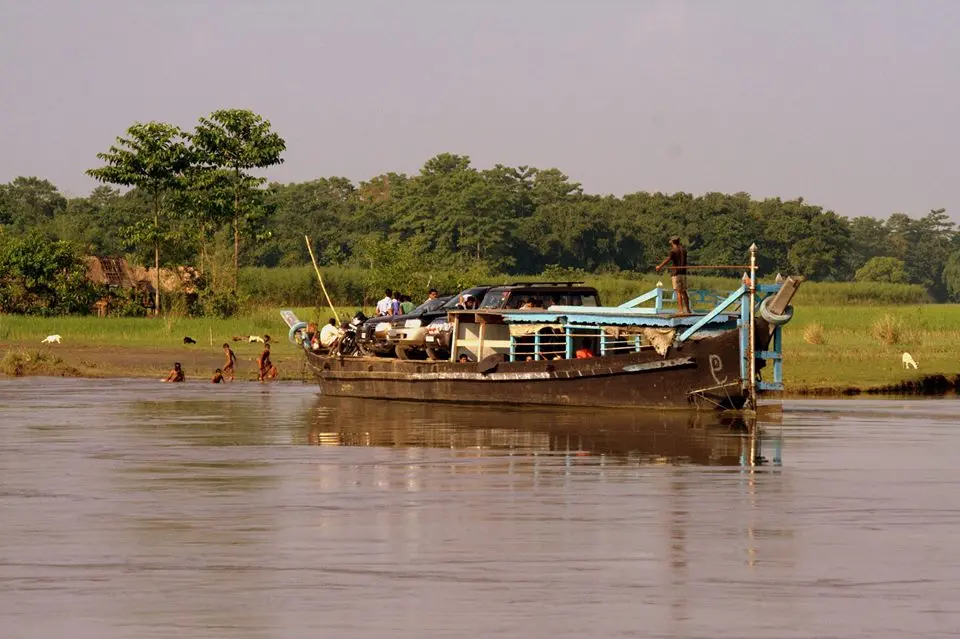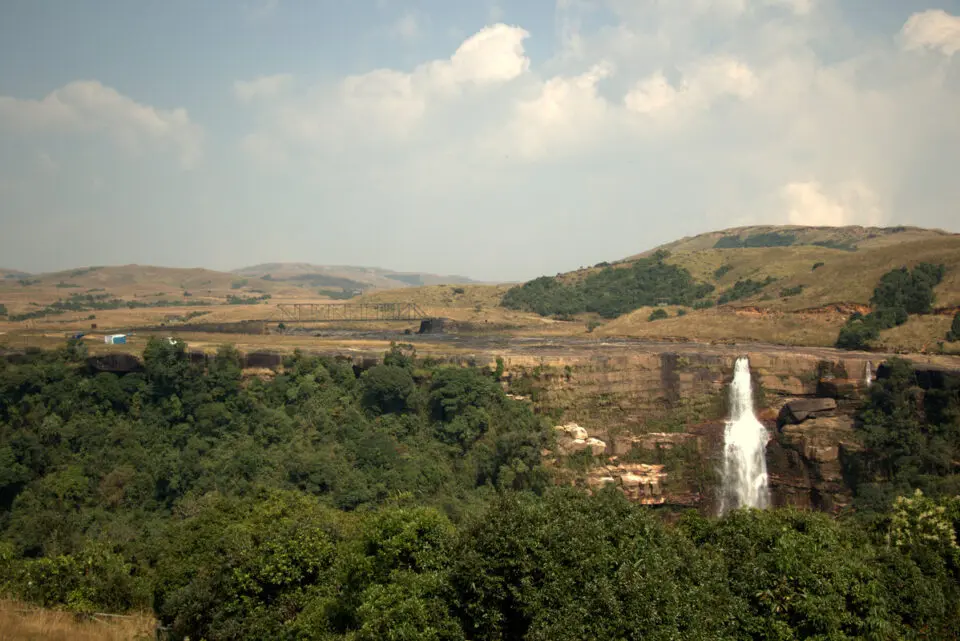

A melting pot of culture and people from across the ages, India’s North East is a region rich in tribes, folk music and dance, traditions, ethnicity, cuisines and craft. Each state within the region namely, Assam, Arunachal Pradesh, Meghalaya, Nagaland, Manipur, Mizoram and Tripura have their own tribes and culture to go along with them. North East India’s unique ethnic diversity has been preserved under the sheltering canopy of the rainforests and the lofty impenetrable mountain realms and the majority of people living here do not trace their roots back to the Indo-Aryan stock but descend from those who migrated here centuries ago from Mongolia, Tibet, Burma, Laos, Cambodia and Thailand.
Embarking on a cultural journey in this region is all about leaving behind pre-disposed notions and immersing oneself into a journey of wonder and discovery.
Arrive in Guwahati and explore what the city has to offer. You will visit the World War 2 Cemetary and the famous Kamakhya Temple, a centre of pilgrimage and worship. Subject to there being enough time you can also visit Sualkuchi, a centre famed for its silk cottage industry. Stay at a hotel in Guwahati.
Drive to Kaziranga National Park. The park has different ranges and you can explore them on jeep and elephant safaris. Having a large population of Indian One Horned Rhinoceros and Elephants as well as a sizeable population of Royal Bengal Tigers, your trips into the jungles will be filled with the excitement of viewing large animals as well as a lot of birds. Stay at a lodge outside Kaziranga.
Drive to Majuli. Majuli is the world’s largest river island and is on the mighty Brahmaputra and involves a ferry crossing. Majuli is a centre for culture and arts and there are several ‘satras’ or monasteries that can be visited. You can also go on a walk of a traditional Mishing village and see the culture and their way of life there. There’s local cuisine to be sampled too. Stay at a lodge in Majuli.
Leave Majuli early and drive on to Sibsagar, the medieval capital of the Ahom Kingdom, which ruled present day Assam and its surrounding areas for a long time. At Sibsagar you can see the Rang Ghar, an amphitheatre where the Ahom rulers watched the games and other forms of entertainment as well the Talatal Ghar, a palace fort where the Ahom rulers held court. Drive back to Kaziranga for the night. Stay at a lodge outside Kaziranga.
Drive back to Guwahati and fly out in the evening.

Arrive in Guwahati and explore what the city has to offer. You will visit the World War 2 Cemetary and the famous Kamakhya Temple, a centre of pilgrimage and worship. Subject to there being enough time you can also visit Sualkuchi, a centre famed for its silk cottage industry. Stay at a hotel in Guwahati.
Drive to Kohima. Kohima, the capital of Nagaland is a bustling town situated high on a ridge. Kohima has several Angami villages around and you will visit one such tribal village to see their culture and their way of life. Kohima also witnessed fighting in WW2 and you can visit the war memorial and museum as well as try the local cuisines Nagaland has to offer. Stay in a hotel/homestay in Kohima.
Drive to Kaziranga National Park. The park has different ranges and you can explore them on jeep and elephant safaris. Having a large population of Indian One Horned Rhinoceros and Elephants as well as a sizeable population of Royal Bengal Tigers, your trips into the jungles will be filled with the excitement of viewing large animals as well as a lot of birds. Stay at a lodge outside Kaziranga.
Drive back to Guwahati and fly out in the evening.

Arrive at Bagdogra today and drive to Gangtok. Gangtok the capital of Sikkim, is inhabited by different ethnicities such as Nepali, Lepchas and Bhutia and rose to prominence as a site of Buddhist pilgrimage.
Explore Gangtok and its surrounding areas. Visit Rumtek monastery, the largest in Sikkim and the seat of the Karma Kagyu lineage. You will also do a day excursion drive to Changu Lake, a glacial lake situated at an elevation of 12,313 ft.
Drive to Pelling situated at an altitude of 6840 ft and famous for its views of the Kanchendzonga range. You will also visit the Pemayangste Monastery, one of Sikkim’s most revered monastery as well as the Khecheopalri Lake, a sacred lake for both Buddhists and Hindus and believe to be a wish fulfilling lake. You also get to enjoy a few walking trails in and around Uttarey. Visit local villages and enjoy a traditional lunch.
Drive to Turuk and check into the grand old mountain estate of Turuk Kothi. Built in 1848,
Turuk Kothi is home to the family of Sikkim’s first minister, Laxmi Das Pradhan and they continue to nurture the estate to this day.
After a leisurely breakfast, drive to Kalimpong. While in Kalimpong, visit the home of an acclaimed writer, enjoy walks exploring the town and learn the basics of cooking a Nepali meal with a family in their home.
Drive to Darjeeling, noted for its tea industry, spectacular views of Kanchendzonga and the Darjeeling Himalayan Railway, a UNESCO World Heritage Site. While in Darjeeling, visit the Tibetan Refugee Self Help Centre, the Himalayan Mountaineering Institute and the Mall and Chowrasta.
Drive down to Bagdogra to catch your flight to your onward destination.

Arrive in Guwahati and explore what the city has to offer. You will visit the World War 2 Cemetary and the famous Kamakhya Temple, a centre of pilgrimage and worship. Subject to there being enough time you can also visit Sualkuchi, a centre famed for its silk cottage industry. Stay at a hotel in Guwahati.
Drive to Shillong. Shillong, the capital of Meghalaya is a town situated amongst green hills and forests. You can visit a museum which exhibits the local culture of the tribes who inhabit Meghalaya. You can also visit the local markets to take in a bit of the wares sold there by the locals. Meghalaya has several ‘Sacred Groves’ and the one in Mawphlang is the most famous of them all. You can take a drive there and visit them. Shillong is also a great place to try the local cuisines the various tribes of Meghalaya have to offer. Stay in a hotel in Shillong.
Drive to Cherrapunjee. Cherrapunjee, now called Sohra has the distinction of being the wettest places on Earth is a charming little town situated a few hours drive from Shillong. Enroute Cherrapunjee you will take a detour to Mawlynnong, a picturesque Khasi village nestled amongst thick forests. Mawlynnong is also the start of a short walk for one of the famous Living Root Bridges of Meghalaya. Cherrapunjee has several waterfalls and caves and you can view them at your own leisure. Subject to a market day coinciding with the time of your visit, you can take a walk around the local market where people from the surrounding villages come to display and sell their wares. Stay at a lodge in Cherrapunjee.
Drive back to Guwahati and fly out in the evening.

Every single trip of ours is customisable. We can also take different experiences from each of our journeys and bring it all together to customise a journey for you on the basis of your preferences. Just write into us with what you have in mind and we shall create your personalised journey.
The North East of India is a Biodiversity hotspot. The region is home to an abundance of flora and fauna and has numerous National Parks and Wildlife Sanctuaries to ensure the protection of this wealth.
A melting pot of culture and people from across the ages, India’s North East is a region rich in tribes, folk music and dance, traditions, ethnicity, cuisines and craft.
In a region where a traveler can experience four seasons in a single day, there are certain seasons in the year which offer a distinctive travel experience.
Every region on this planet is different and can offer experiences that are unique in nature. That same is true with the North East of India.
Begin Your Journey Today
